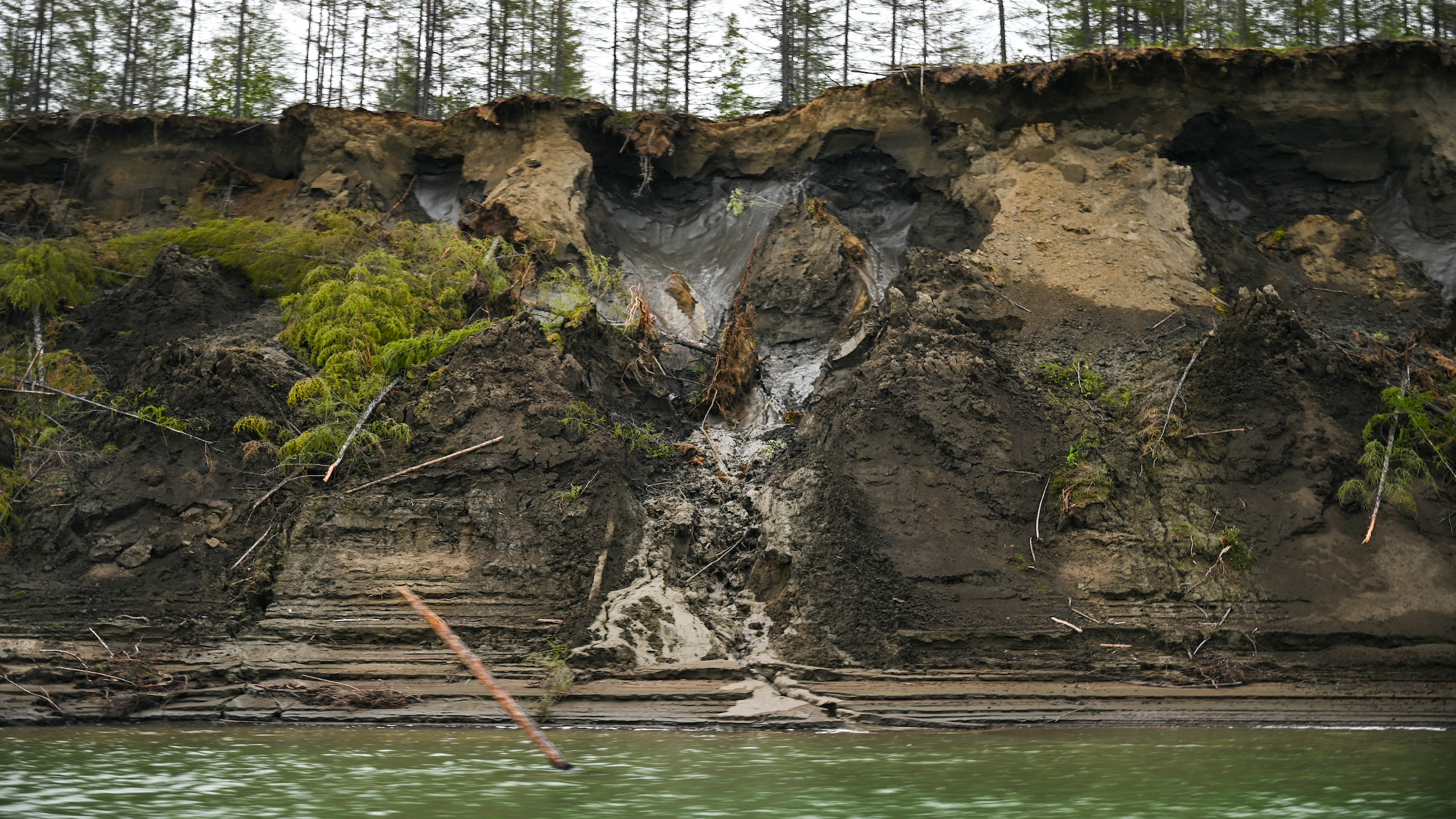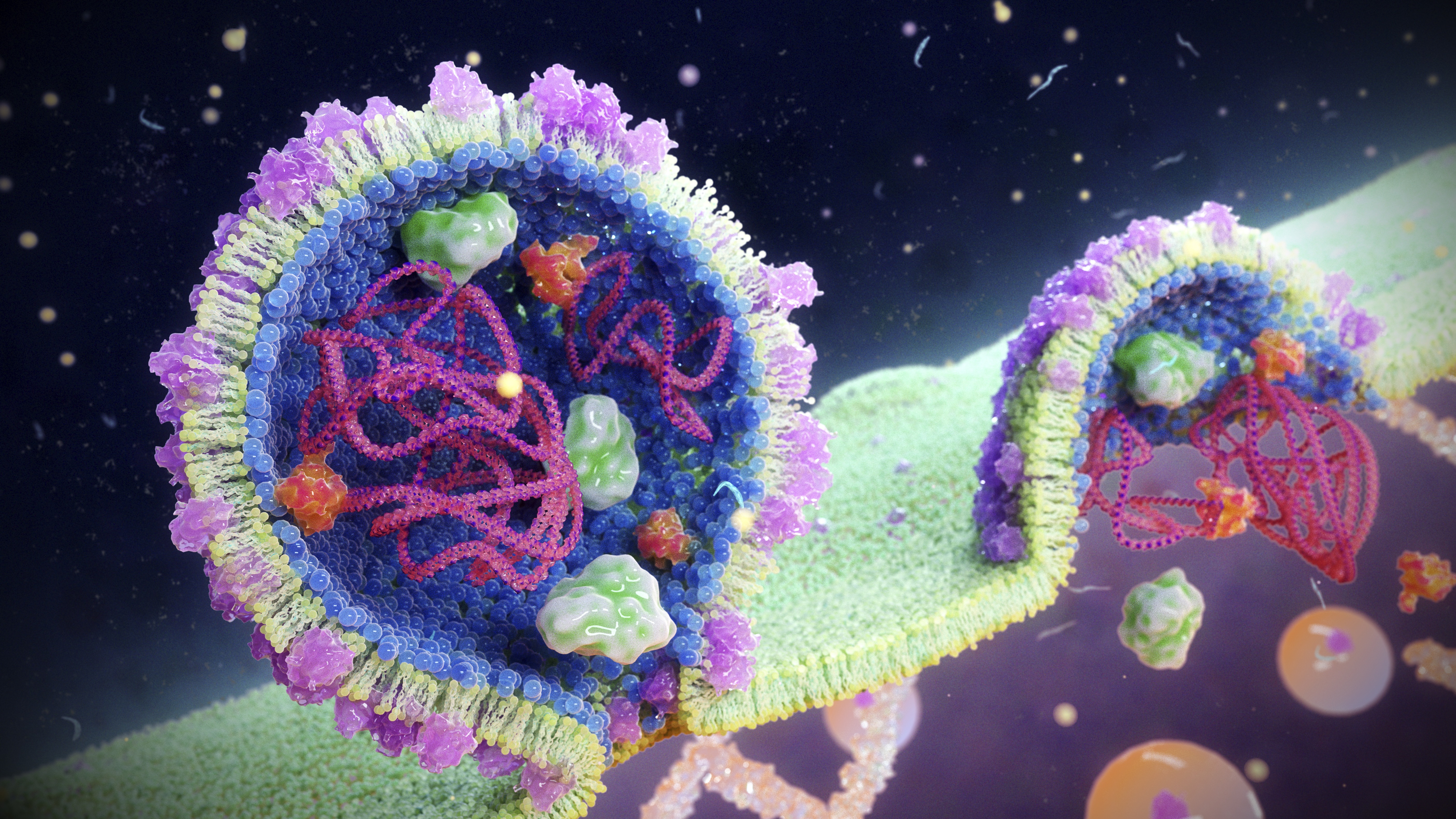12 microscopic discoveries that went 'viral' in 2022
Twelve recent studies showcase how viruses affect humans and other organisms all across the globe.

Viruses have been a near-constant subject of headline news in recent years, especially since the COVID-19 pandemic began. But of course, the pathogens' influence stretches back to the start of human history and beyond — in fact, viruses have had a hand in shaping the trajectory of all life on Earth. In 2022, these 13 "viral" stories highlighted just a few ways the pathogens affect the human body and the world at large.
1. 'Zombie' viruses in Siberian permafrost reawakened

Scientists recently isolated never-before-seen viruses from Siberian permafrost and rivers, as well as preserved mammoth wool and an ancient wolf's intestines. The team thawed out these viruses and determined that some of them could still infect amoeba, despite being up to 48,000 years old. Although the newly described viruses can't infect humans, other viruses lurking in permafrost — and now defrosting due to climate change — theoretically could.
2. Cold sore virus spread thanks to smooching

The virus behind cold sores, herpes simplex virus 1 (HSV-1), likely gained prominence about 5,200 years ago, possibly due to the rising popularity of kissing as a custom, some researchers argue. Herpesviruses, in general, have been around since long before the Bronze Age. But around that time, mass migrations of people from Eurasia to Europe — and the make-out sessions that took place along the way — may have helped fuel the rise of the modern version of HSV-1.
3. Viruses named for Norse gods

Scientists uncovered the genetic traces of a mysterious group of viruses that can infect Asgard archaea, ancient microbes that existed on Earth prior to the first complex cells. These viruses, named after figures in Norse mythology, may have influenced the rise of complex life on Earth, in part, by supplying a precursor to the nucleus that now carries DNA in complex cells.
4. 'Mono' virus might trigger autoimmune disease

The virus behind "mono" may fuel the development of multiple sclerosis (MS), an autoimmune disease that affects the brain and spinal cord, in people susceptible to the disease. Scientists are still learning why the virus, called Epstein-Barr virus, is strongly linked to MS, but they have a few theories as to how it might trigger the disease.
5. Giant viruses in Arctic lake

The Milne Fiord epishelf lake lies fewer than 500 miles (800 kilometers) from the North Pole and contains giant viruses that infect its resident algae. Such giant viruses can measure larger than some bacteria and contain comparably complex DNA. Scientists are still discovering new varieties of giant viruses, learning how their genes work and how they infect cells.
6. Viruses slay superbugs

Viruses that infect bacteria, or "bacteriophages," can make antibiotics more effective, clearing away drug-resistant superbugs that would otherwise defy treatment. In one fascinating case, doctors cultured viruses in lab dishes alongside a bacterial superbug and then selected the best killer from the bunch. They then unleashed that selected virus into a woman's chronic infection, helping to finally cure it.
Get the world’s most fascinating discoveries delivered straight to your inbox.
7. Ancient viruses show widespread activity in human body

Remnants of ancient viruses can be found scattered throughout the human genome. Once considered non-functional "junk DNA," it turns out that these genetic snippets are actually active in tissues throughout the body. What these viruses do in healthy tissue is still a mystery, and the answer is likely different in each tissue type.
8. Never-before-seen viruses found in the ocean

A team of scientists scoured the world's oceans for viruses containing RNA, a molecular cousin of DNA. Overall, they identified about 5,500 never-before-seen RNA virus species during their quest. To categorize all the new viruses, the team proposed doubling the number of taxonomic groups used to classify RNA viruses, from the existing five phyla to 10 phyla.
9. Ocean viruses may affect flow of carbon through the ecosystem

Thousands of RNA viruses recently discovered in the world's oceans infect a wide variety of hosts, including fungi, algae, amoebas and even some invertebrates. By infecting organisms that pull carbon dioxide out of the atmosphere, these mysterious viruses may influence how carbon flows through the ocean at large, scientists say.
10. Virus-carrying ticks break record

A shockingly high number of ticks at the Lawrence Township Recreational Park in Pennsylvania carry a potentially life-threatening virus called deer-tick virus, which can be transmitted to humans through tick bites. Of 25 ticks sampled from the park in a recent survey, 92% tested positive for the virus. By comparison, the highest infection rate among ticks previously measured at a single U.S. site was 25%.
11. Climate change may push 'Japanese encephalitis' outbreaks south

"Japanese encephalitis" (JE), a viral disease that can sometimes spark dangerous inflammation in the brain, reached southern Australia in 2022, a region where it hadn't previously spread. The JE virus gets passed to humans through the bites of infected mosquitoes and typically affects people in Asia and parts of the Western Pacific. Its appearance in Victoria, New South Wales, South Australia and Queensland hints that climate change may be expanding the disease's range southward.
12. Was the famous 'Russian flu' a coronavirus?

A mysterious illness that emerged in Russia in the late 1880s and then spread around the globe may have been caused by a coronavirus, some scientists think. Known as the "Russian flu," the virus caused a pandemic eerily similar to the ongoing COVID-19 pandemic, but researchers are still hunting for hard evidence of the virus' true identity. If they can find this evidence, they plan to investigate whether a descendent of the virus is still circulating today, perhaps causing milder disease than its predecessor.

Nicoletta Lanese is the health channel editor at Live Science and was previously a news editor and staff writer at the site. She holds a graduate certificate in science communication from UC Santa Cruz and degrees in neuroscience and dance from the University of Florida. Her work has appeared in The Scientist, Science News, the Mercury News, Mongabay and Stanford Medicine Magazine, among other outlets. Based in NYC, she also remains heavily involved in dance and performs in local choreographers' work.


